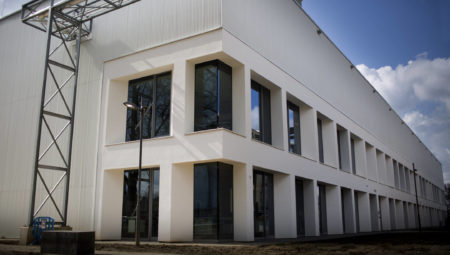Vertoro evolved from the InSciTe project Lignin Riches, where Boot was project leader. ‘The aim of the project was to produce this CLO via a thermocatalytic process. The feedstock in the first instance is lignin which is released as a by-product of second generation bio ethanol production. It is used mainly as an energy source for the above production process but, converted into CLO, it can increase this yield fourfold.’ Boot believes that there is also a market for CLO based on biomass. After all, the fossil fuel oil contains sulphur (3 to 5 percent) and is very polluting. What is more, for the time being electrification is not something the shipping world is looking at.
Scaling up at Chemelot
It has not come to that stage yet. Boot will first scale up the process at the Brightlands Chemelot Campus in Geleen. Boot, formerly employed at the Eindhoven University of Technology: ‘This site is the best choice as far as facilities (permits and suchlike) and image are concerned. In mid-2018 we will open a multipurpose pilot plant in which we will scale up the process. We need to roll out a barrel (160 litres) of oil a day. The technology of our process is relatively simple and solid. I cannot go into details, unfortunately, because the patent applications are still pending. What I can say is that we took a good look at the petrochemical industry, in particular the extraction of tar sand oil. We do not have to produce an end product with a purity of 99.4 percent; what we aim for first of all is a pumpable oil. So viscosity does play a part.’ According to Boot, the biggest challenge lies in reducing the production costs and fine-tuning the process further. This involves variables such as process temperatures, concentrations of solvents, resting times, etc. ‘The degree to which we can use solvents and catalysts again determines the cost efficiency of our process to a large extent.’
Looking for partners
This efficiency will increase the more the production capacity is raised. ‘Ultimately we want to build a factory (editor’s note: estimated investment at least 20 million euros) which should be located close to an existing bio ethanol plant. This can be in the United States, but these production locations also exist in Europe. The funding for such a plant is a huge challenge. That is why we are looking for industrial partners in the value chain with which we can build the first plant together. The applications of CLO go further than just marine fuel. At InSciTe we also worked together with producers of resins, phenol and octane improvers. In the sister projects Bio-Hart (Interreg) and Scelio-4B (OP Zuid) various industrial partners are also involved in examining these CLO applications, but then on pilot scale. Bio-Hart, Scelio-4B and Lignin Riches are substantial research programmes with a combined budget of more than 20 million euros. That illustrates the potential of this route.’



